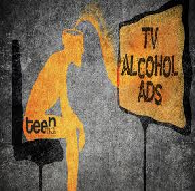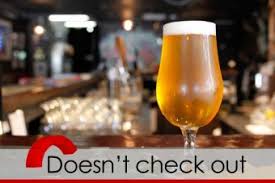Course Project on Indoor Theme Park Order Instructions: Background

In the first two parts of our Course Project you have been taking your own selected project and documenting the effort (the Scope Statement), creating your initial WBS/Schedule, and then augmenting your schedule with additional information like durations, task dependencies, and estimated costs. Then you have been justifying your schedule and budget estimates.
In Course Project Part-3 (CP3) we will be starting afresh with a brand new project effort which you will all tackle, the creation of a theme park. The thinking here is, given the wide variety of projects selected by students, using a common project problem would expose the class to a uniform level of challenge in this most complex part of the course project (using EVA and developing a set of corrective actions for a project in execution).
Overview
At a high level you will be building fully populated project schedule in Microsoft Project for the theme park effort to include:
1. Defining tasks
2. Defining task hierarchies
3. Defining task durations
4. Defining task dependencies
5. Defining task constraints
6. Defining resources
7. Assigning resources to tasks
8. Assigning variable and fixed costs
9. Establishing a Project baseline
10. Establishing a percentage complete
11. Defining a reporting period
12. Determining our EVA values (actually pulling those out of MSP which will do the calculations for you!)
13. Determining your project status given all the data
14. Developing corrective actions to get us back on track
15. Documenting what you found and what we plan to do about it
?
Initial Assessment
Although it’s a little involved (the pure number of steps, for example, complicates our lives) the assignment is straightforward given our level of knowledge at this point.
Where this gets a bit iffy is modifying your Microsoft Project Plan (AKA Schedule) to reflect your corrective actions. Inevitably that gets you down in the details of how MSP works at a level that leaves me uncomfortable given that we don’t formally teach Microsoft Project in our training.
It is one thing to walk you through a step-by-step process on how to use MSP in a well-defined way. It’s quite another to have you “mess around” in Microsoft Project doing schedule and cost calculation manipulation. Exactly what you need to do, depends on what you find, AND what you decide to do about it. I’ve seen students stuck in a loop trying to determine the difference between a Fixed Work Task, vs a Fixed Duration Task, vs a Fixed Unit Task and the effect that selection has on the task cost calculation and schedule, and that is just for openers.
SOooooo, I’m going to modify the assignment slightly, by NOT having you submit your AFTER Microsoft Project report, showing what you did in Microsoft Project to correct the problems you found. I will take that information just from your essay. I will explain in more detail what you need to do below, as well as:
• Give you some checkpoints to validate your work is on track
• Simplify some of the unnecessarily complex reporting requirements for the assignment.
My hope is to expose you to the FULL pedagogical and educational value of the assignment while minimizing the frustration.
?
First Things First – Setup Your Schedule File
You need to open a new schedule (project file) in MSP and save it with whatever name you want (I recommend “ThemePark-YourLastName v0.MPP” v0 is version zero).
Initial settings
You can leave all the parameters to their default values EXCEPT, you must set the project start date to ” 4/14/08″ and set “new task created” to auto-scheduled (It defaults to Manual Schedule and you don’t want that).
You learned how do to that stuff from the Week-1 tutorial, yes?! If not review “Building a Schedule in MSP Example” in Doc Share.
Build Initial Schedule
There is a TON of data to enter here! However, I have a work around. The easiest and least error prone way to build your schedule is to use a series of copy/pastes from the tables below. Follow the instruction carefully and all will go well. I’ve included row numbers in all the tables so you can quickly compare your MSP Schedule to the tables. Never copy the row number column to MSP (no need it already has the row number as a permanent fixture just like Excel)
1. Add Task Names
Here are the tasks for our project without any hierarch set. Copy/Paste the Task Names (all 56 of them!) from the table below to your empty project schedule in Microsoft Project (remember– just the task name column).
Task Name
1 Theme Park Project
2 Site Layout & Site Grading
3 Footings & Foundations
4 Masonry
5 Frames, Columns and Beams
6 Joists & Roof Deck
7 Slab on Grade
8 Rough Carpentry
9 Interior Studs
10 Interior Drywall
11 Painting
12 Elevator
13 Doors
14 Custom Theme Painting
15 Flooring
16 Finish Carpentry
17 Bathroom Compartments/Accessories
18 Plumbing
19 Hangers & Supports
20 Pipes & Fittings
21 Test
22 HVAC
23 Stacks & Vents
24 Hangers & Supports
25 Ductwork & Piping
26 Test
27 Electrical
28 Boxes
29 Conduit
30 Wiring Devices/Switches/Receptacles
31 Light Fixtures
32 Test
33 Mechanicals Complete
34 Attraction Install and Training
35 Ferris Wheel
36 Ferris Wheel to ship
37 Ferris Wheel Legs & fan install
38 Ferris Wheel gondola install
39 Ferris Wheel MEP install
40 Ferris wheel platform design
41 Ferris Wheel Platform
42 Ferris Wheel Railing
43 Ferris wheel turnstile
44 Ferris wheel Training
45 Ferris Wheel Certification
46 Ropes course install & Training
47 Climbing wall install & Training
48 Carousel install & Training
49 Bowling install & Training
50 Go Cart install & Training
51 Mini Golf install & Training
52 Attraction install and training complete
53 Furniture Installation
54 System and Security Training
55 Final Walkthrough
56 Grand Opening
2. Checkpoint Result
Double check that you have 56 rows of tasks with Row 1 = Theme Park Project, Row 25 = Ductwork & Piping and Row 56 = Grand Opening
please have the writers stick to the guidelines and requirements that i will upload.
Course Project on Indoor Theme Park Sample Answer
Executive Summary
The use of project management tools such as Microsoft Project (MSP) Program is without any doubts one of the vital methods of ensuring that project implementation is under control, particularly based on Earned Value Analysis (EVA) indices and/or indicators. This is attributed to the fact that, if the obtained EVA indices and/or indicators are not favorable the project manager and his/her team embarks on developing a set of corrective actions for a project in execution. Through the analysis, the Earned Value Analysis (EVA) indices and/or indicators for the theme park project implementation are outlined in Table 1 shown below:
| Theme Park Project Earned Value Analysis (EVA) | |||||||||||||||||
| Earned Value | |||||||||||||||||
| Planned Value–PV (BCWS) | Earned Value–EV (BCWP) | Actual Cost– AC (ACWP) | Schedule Variance- SV | Cost Variance – CV | BAC | EAC | VAC | ||||||||||
| $1,651,866.67 | $1,086,640.60 | $1,230,683.00 | -$565,226.07 | -$144,042.40 | $4,449,920.00 | $5,039,822.14 | -$589,902.14 | ||||||||||
| Earned Value Cost indicators | |||||||||||||||||
| Planned Value – PV (BCWS) | Earned Value – EV (BCWP) | Cost Variance – CV | CV % | CPI | BAC | EAC | VAC | TC | |||||||||
| $1,651,866.67 | $1,086,640.60 | -$144,042.40 | -13% | 0.88 | $4,449,920.00 | $5,039,822.14 | -$589,902.14 | 1.04 | |||||||||
| Earned Value Schedule indicators | |||||||||||||||||
| Planned Value – PV (BCWS) | Earned Value – EV (BCWP) | Schedule Variance – SV | SV % | SPI | |||||||||||||
| $1,651,866.67 | $1,086,640.60 | -$565,226.07 | -34% | 0.66 | |||||||||||||
Based on the obtained EVA indices and/or indicators, the project as it now stands is at risk primarily with regards to cost and schedule. This is because a review of the project’s Critical Path; it is evident that some tasks, especially those with later start dates will pose a time constraint on project completion within the intended date. This can be addressed by rescheduling the tasks to ensure that tasks which can be executed with other simultaneously are pushed forward. A review of current EVA values and the current forecasting numbers such as EAC and VAC show that the project is currently running over-budget and behind schedule and also estimated to be completed over-budget and behind schedule. The corrective actions to address these issues include revisiting the planning process in order to update the project management plan including rescheduling of tasks and resources so that the project can be brought back in line with constraints and objectives. Detailed Analysis and Corrective Plan Essay
Regular observation and measurement of project implementation against the project plan is imperative in ensuring that the project is completed within acceptable variances of schedule, scope and schedule, and to ensure issues and risks are monitored continuously and the necessary corrective actions taken (Hamilton, 2004). However, out of the three key determiners of success in a project namely schedule, budget, and customer satisfaction or scope, the most difficult to achieve successfully is usually the project budget (Hamilton, 2004). According to Hamilton (2004) the project tasks need to proactively monitor and control tasks in a project plays an important role in the identification of issues ahead of time in order to enable the appropriate corrective actions to be taken.
Based on the obtained EVA indices and/or indicators, the project as it now stands is at risk primarily with regards to cost and schedule. For instance, all the current (baseline +40%) EVA numbers indicate that the project is currently behind schedule and over budget. In particular, the Earned Value (EV) of $1,086,640.60 against a Planned Value (PV) of $1,086,640.60 is not a good indicator of the project progress based on the difference. However, from the perspective of the Actual Cost (AC) of $1,230,683.00, this is an indication that upon appropriate corrective action the project can be completed within the budgeted cost and scheduled time or slightly off the estimates. A consideration of the EVA indicators of -$565,226.07 and -$144,042.40 for Schedule Variance (SV) and Cost Variance (CV) respectively further indicates that the project is currently behind schedule and over budget since both are negative. Furthermore, SPI of 0.66 and CPI of 0.88 are further indication that the project is currently behind schedule and over budget since both are below 1.
In addition, the current forecasting numbers such as Estimate cost at Completion (EAC) and Variance at Completion (VAC) can be used to estimate cost of project completion and cost variance at completion respectively. The formula used to calculate EAC is AC + ETC; while the formula to calculate VAC is BAC-EAC. From the analysis, the values of EAC and VAC are $5,039,822.14 and -$589,902.14 respectively (Philipson & Antvik, 2009). However, despite the VAC, a TC of 1.04 indicates that the project can still be completed within the budgeted cost (Devaux, 2014).
Moreover, from the review of the project’s Critical Path; it is evident that some tasks, especially those with later start dates will pose a time constraint on project completion within the intended date. The necessary corrective action to address this is by rescheduling the tasks to ensure that tasks which can be executed with other simultaneously are pushed forward (Philipson & Antvik, 2009). Furthermore, since a review of current EVA values and the current forecasting numbers such as EAC and VAC show that the project is currently running over-budget and behind schedule and also estimated to be completed over-budget and behind schedule (Humphreys, 2011).
The corrective actions to address these issues include revisiting the planning process in order to update the project management plan so that the project can be brought back in line with constraints and objectives. This is mainly because these corrective actions are conceptualized after thoroughly evaluating the possible threats or detriments likely to affect the budget cost and allocated time to complete the project (Philipson & Antvik, 2009). The purpose of the corrective action is to ensure that that projects risks are reduced or lessened, which potentially have adverse impacts prior to any significant delay and/or over spending can occur. Thus, it is possible to push the project completion date to 12/19/08 by rescheduling critical path tasks and allocation of more resources which would undoubtedly require some budget compromises attributed to allocation of more workers or working overtime.
Course Project on Indoor Theme Park References
Devaux, S. A. (2014). Managing Projects as Investments: Earned Value to Business Value. London, UK: CRC Press.
Hamilton, A. (2004). Handbook of Project Management Procedures. New York, NY: TTL Publishing, Ltd.
Humphreys, G. (2011). Project Management Using Earned Value. Newtown Square, PA: Humphreys and Associates.
Philipson, E., & Antvik, S. (2009). Earned Value Management: An introduction. New York, NY: Philipson Biz.









